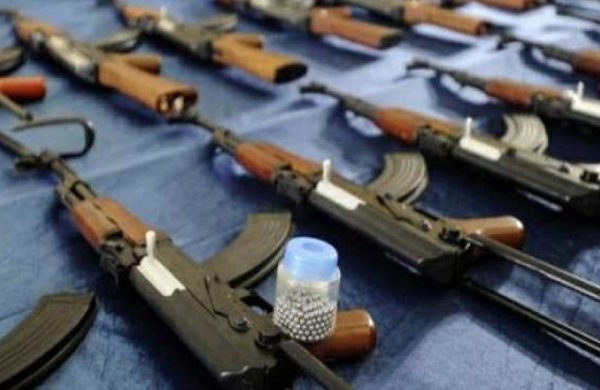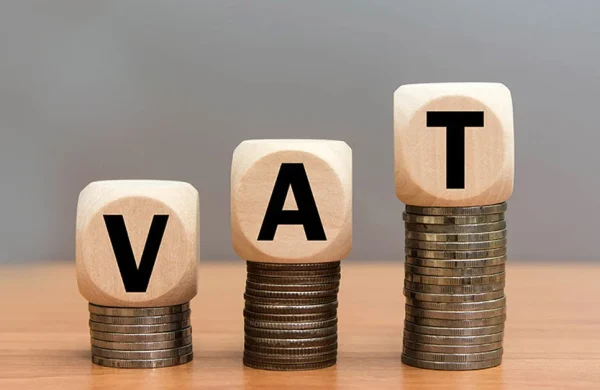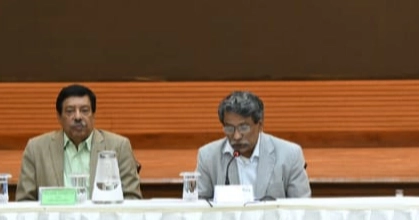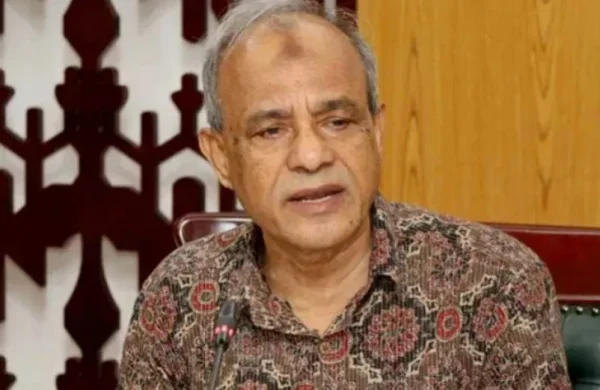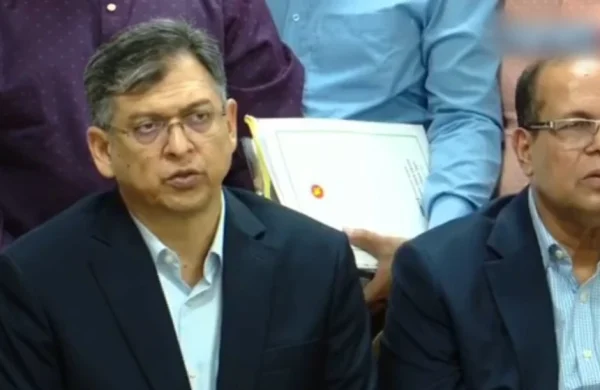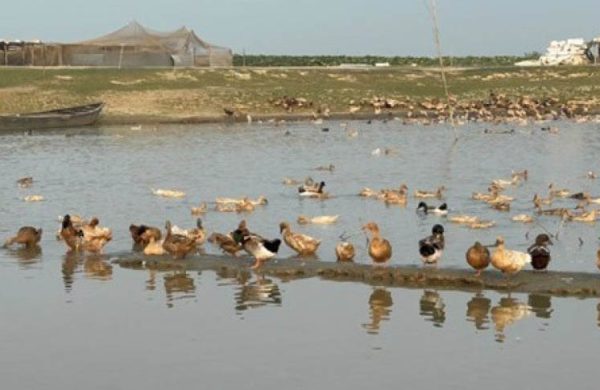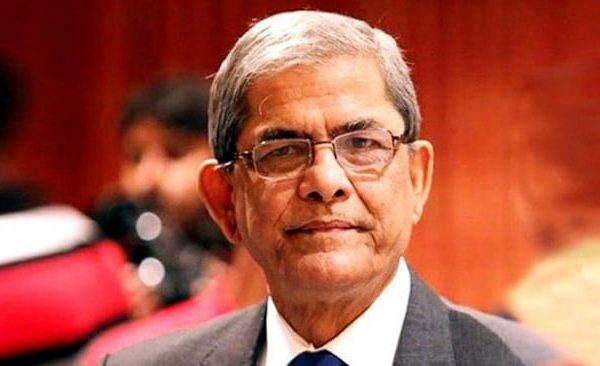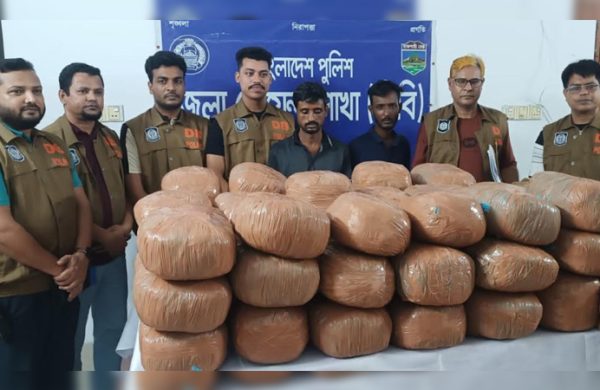Highways crumbling amid repair delays and contractor blacklisting
- Update Time : Sunday, August 24, 2025
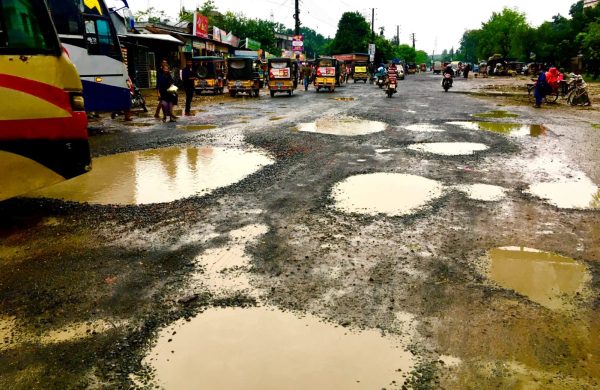
Staff Correspondent:
Bangladesh’s highways are deteriorating faster than they are being repaired, battered each year by monsoon rains, floods, and overloaded trucks. Yet despite large allocations, only a fraction of the needed maintenance work is getting done — leaving pothole-ridden stretches that slow trade, damage vehicles, and turn daily commutes into ordeals.
The crisis has deepened since last year’s political transition, when the Roads and Highways Department (RHD) blacklisted dozens of contractors linked to corruption under the Awami League. The clean-up drive exposed how dependent the system had become on a cartel of politically connected firms, leaving repair work stalled across much of the country.
REPAIR FUNDS GO UNUSED
In FY2024–25, the government allocated Tk2,615 crore for road maintenance. But only Tk1,095 crore — just 42% — was actually spent, leaving 1,200 km of roads unrepaired out of a 2,200 km target.
By contrast, the year before, almost the entire Tk2,100 crore allocation was used. The difference, officials admit, lies in delayed tenders, blacklisted contractors, and a slow procurement system after the August 2024 uprising.
“Routine and periodic maintenance virtually stopped,” one senior RHD official acknowledged. “Tender scrutiny dragged on, complaints piled up, and in many areas, no credible contractors were left.”
Nowhere is the neglect clearer than on the Khulna–Satkhira highway. From Zero Point to Koiya, the road barely resembles a highway. Stones and pitch have peeled away, deep potholes scatter the surface, and muddy stretches force vehicles to crawl.
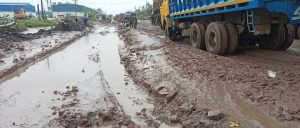
Not just this one; parts of other major highways — including Jashore–Khulna, Satkhira–Shyamnagar, Elenga–Hatikumrul–Rangpur, and Dhaka–Sylhet — are in similar condition.
A COUNTRYWIDE CRISIS: JASHORE–KHULNA HIGHWAY
A five-kilometre stretch from Basundia to Chhengutia is nearly impassable, filled with potholes and mud after heavy rains. Thousands of vehicles face daily accident risks, trade is disrupted, and fertiliser supply to farmers suffers.
The highway links Benapole, Noapara, Mongla, and Bhomra ports. Despite a Tk321 crore reconstruction completed in 2023 and an ongoing Tk172 crore project, sections are already collapsing.
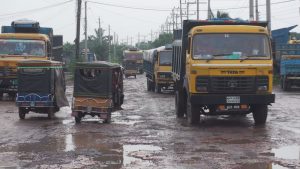
Local resident Abdus Sabur said, “Repairs drag on; before one part is fixed, another breaks. Students and patients all suffer.”
Truck driver Rajib Hossain added, “Driving is nearly impossible; breakdowns and accidents are frequent.” Noapara Group manager Raju Ahmed noted, “Fertiliser supply is disrupted; farmers face losses.”
Khulna RHD Executive Engineer Golam Kibria said, “Weak soil and overloaded trucks cause rapid damage. On Buet’s advice, we’re building a concrete road—four kilometres done, 2.3 underway, eight in total. Completion will take about 18 months.”
SATKHIRA–SHYAMNAGAR HIGHWAY
A 62-km stretch from Satkhira Medical College to Vetkhali is riddled with potholes and waterlogging, causing severe hardship for drivers and passengers. Patchwork repairs have failed, and full-scale work will begin after the monsoon.
Bus driver Abdul Kader said, “Engines and other parts are getting damaged. The road has been like this for 3–4 years, yet no repairs have been done.” Residents also complain of mud splashing and unsafe conditions.
Satkhira RHD Executive Engineer Mohammad Anwar Parvez said, “Tk570 crore has been allocated. Five of six tender packages are issued; one is pending. Repairs will start after the monsoon, ending this prolonged suffering.”
CLEAN-UP DRIVE AGAINST CONTRACTOR CARTEL
A key reason for the underspending in road repair was RHD’s internal crackdown on irregularities in contractor selection. Under the Awami League, a cartel of contractors repeatedly secured projects using “fake documents”.
After the party’s fall in August 2024, RHD tightened scrutiny, blacklisting 43 such contractors after scrutiny. This delayed the processing of 175 repair tenders in FY25 (July 2024–June 2025). The political upheaval that toppled the AL government further slowed tender procedures.
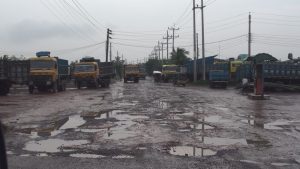
Md Zakir Hossain, additional chief engineer of RHD Khulna Zone, said 14 repair tenders were issued last fiscal year, but low competition—sometimes only one bidder—meant some had to be reissued. Work orders worth Tk140 crore were awarded across eight packages, mostly toward year-end, and contractor participation is now gradually increasing.
Khandakar Golam Mostofa, executive engineer of RHD Comilla, also said no road maintenance could be done in his area, leaving roads in poor condition.
“Of 13 tenders issued last fiscal year, six received work orders—mostly at year-end—while seven remain unresolved due to complaints against contractors and delayed approvals,” he said.
Golam Kibria, executive engineer of RHD Jashore, said contractor issues remain unresolved. Last fiscal year, two maintenance tenders were completed — one in March, the other in June — with work orders worth Tk50 crore. Another tender, valued at Tk40 crore, is still pending contractor appointment.
An RHD official, requesting anonymity, said the contractor scrutiny process is still ongoing but nearing completion. “We expect that the contractor-related issues will be resolved quickly in the current fiscal year, allowing us to carry out repairs without major obstacles,” the official added.
MAINTENANCE DELAY DRIVES UP REPAIR COST
According to RHD officials, neglecting timely maintenance significantly inflates repair costs.
“For example, work that could be done for Tk30 now may cost Tk100 if delayed by a year,” said another senior RHD officer. “Once potholes expand and the carpeting peels off, expenses rise several times over.”
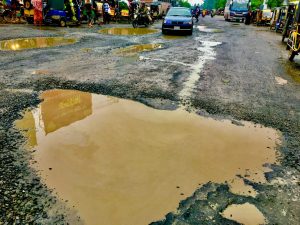
He added that 1,200 km were left unrepaired last year, which will be prioritised this year. But with only 2,500 km budgeted — including the backlog — many damaged roads will remain, driving up future repair costs and keeping the sector in a vicious cycle.
DAMAGES ABOUND, BUT REPAIR FUNDS ARE INADEQUATE
RHD estimates at least 10,000 km out of its 22,000 km network now need repairs. Proper upkeep would require Tk7,000 crore a year, but allocations remain stuck at around Tk2,000 crore.
Last year, road conditions worsened with heavy monsoon rains and floods. Overloaded trucks worsen the damage.
Bangladesh raised the vehicle weight limit to 23 tonnes — above the global 16-tonne standard — under pressure from businesses.
In practice, many trucks exceed even that, cracking road surfaces and creating depressions where water collects. Substandard bitumen imports and climate-related floods have added to the deterioration.
BANGLADESH NEEDS A PERFORMANCE-BASED ROAD FUND
Experts argue that Bangladesh needs a shift from reactive patchwork to performance-based maintenance.
Md Shamsul Hoque, transport expert and BUET professor, said road maintenance is essential to infrastructure, as all roads eventually deteriorate. Without timely funds, costly rehabilitation replaces simple repairs.
Bangladesh traditionally relied on reactive maintenance — fixing potholes after they appear. Modern practice is proactive: contractors are appointed from the start, with yearly costs per km planned in advance. Based on 50 years of RHD data, about Tk7,000 crore is needed annually, enabling data-driven budgets.
Globally, performance-based maintenance is standard. Contractors are responsible for pothole-free, crack-free, smooth roads with proper markings. Performance is checked every two months, and payment is made only if standards are met.
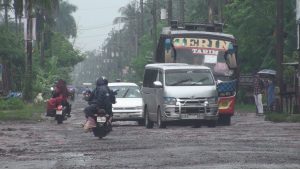
In Bangladesh, contractors are still hired reactively, often only for major works. Advanced countries fund maintenance via dedicated road funds—tolls, license fees, and 1% of development project costs—sometimes matched by development partners. Such a system would reduce reliance on government budgets.
NEW ROAD PROJECTS CUT FUNDING FOR REPAIRS
Ongoing new road construction projects have reduced allocations for repairs. A major example is the Dhaka–Sylhet highway.
A 12-km stretch from Ashuganj roundabout to Sarail–Bishwa Road remains unrepaired under the four-lane project, riddled with potholes and causing severe congestion and frequent accidents. Vehicles now take 7–8 hours to cross.
The 51-km four-lane project from Ashuganj river port to Akhaura land port, budgeted at Tk5,791 crore and implemented by an Indian firm, AFCONS Infrastructure Ltd, has progressed slowly due to land disputes, the pandemic, global recession, and contractor issues. Overall completion stands at 57%: Package-1 (Ashuganj–Bishwa Road) 62% done but stalled, Package-2 52% done, and Package-3 yet to start.
After last year’s uprising, about 300 contractor officials left for India, returning in November amid ongoing internal delays. Shamim Ahmed, project manager, said, “This stretch falls under the project, so government repair funding isn’t allowed. Contractors handle repairs, and emergency maintenance keeps traffic moving. The deadline extension to June 2027 has been requested, and work is being pressured to speed up.”
Similarly, the Elenga–Hatikumrul–Rangpur highway’s 190-km four-lane expansion has been damaged by heavy rains this fiscal year. Of the stretch, 100 km is bitumen, 90 km concrete; potholes have formed in bitumen sections, while concrete sections remain intact.




